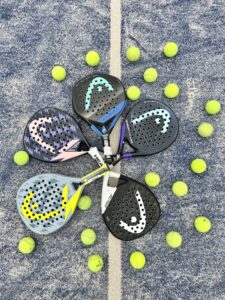Mastering the Padel Court Service Box Rules: A Beginner’s Guide
3 min read
Mastering the Padel Court Service Box Rules: A Beginner’s Guide
Welcome, fellow padel enthusiasts, to this beginner’s guide on how to understand the padel court service box rules. Padel, a fast-paced and exhilarating racquet sport, has been taking the world by storm with its unique combination of tennis and squash. Whether you are new to the game or looking to brush up on your skills, grasping the service box rules is crucial to becoming a confident player. So, let’s dive right in and uncover the secrets of mastering the padel court service box!
Understanding the Basics
Before we dive into the intricacies of the service box rules, let’s start with the basics. In padel, the court is divided into two halves by a net, and each half contains a service box. The server must stand behind the baseline and diagonally opposite to the service box they are about to serve into. Meanwhile, the receiver stands on the opposite side, prepared to return the serve.
The First Serve
When it comes to the first serve, the server has a little more flexibility in padel compared to other racquet sports. They can choose to serve the ball from any position behind the baseline and outside the imaginary extension of the singles side lines. This means you can add some personal flair to your serve by standing closer to the center or choosing a more daring position towards the sideline. Just make sure you’re within the boundaries!
Remember, the ball must be hit underhand, below waist level, and make contact with the ground before reaching the height of the net. The serve is performed diagonally into the receiver’s service box. Aim for accuracy rather than sheer power, as padel rewards strategic shots rather than outright force.
Faults and Second Serve
If your first serve does not meet the above criteria, it is considered a fault, and you get to try it all again. However, beware! If your second serve is also a fault, it will result in a point for your opponents. So, focus on consistency to avoid giving away free points. Remember, practice makes perfect, and before you know it, you’ll be acing your serves!
The Receiver’s Role
Now that we’ve covered the server’s responsibilities, let’s shift our focus to the receiver. During the serve, the receiver must stand inside the service box, behind the service line. Once the ball is in play, they have the freedom to step forward and return the serve with a well-calculated shot.
As the receiver, it’s important to keep your eye on the ball, anticipate the direction and speed of the serve, and position yourself accordingly. A good strategy is to aim for placing your return shot deep into the opponent’s side, ensuring they have a more challenging time returning it effectively.
Volleying After the Serve
One of the unique aspects of padel is the opportunity to play volleys off the bounce. Unlike tennis, where you cannot volley the ball until it crosses the net, padel allows you to strike the ball on the rebound from your opponent’s half. This means you can immediately volley the ball back into their court, adding a thrilling element to the game.
However, remember not to step into the service box while volleying if it’s not your turn to serve. Violating this rule will result in losing the point. So, keep your excitement in check and master the art of calculated volleys to give yourself a competitive edge!
Conclusion
Congratulations, my fellow padel enthusiasts! You now have a firm grasp on the padel court service box rules. By understanding the basics, serving with finesse, and returning the ball strategically, you are well on your way to becoming a skilled padel player.
Remember to practice your serves consistently, keeping an eye on accuracy rather than pure power. Position yourself wisely as the receiver and take advantage of the opportunity for thrilling volleys off the bounce.
So, gather your friends, head to the nearest padel court, and put your newfound knowledge to the test. With dedication and practice, you’ll soon conquer the padel court with confidence, leaving your opponents in awe of your skills!







